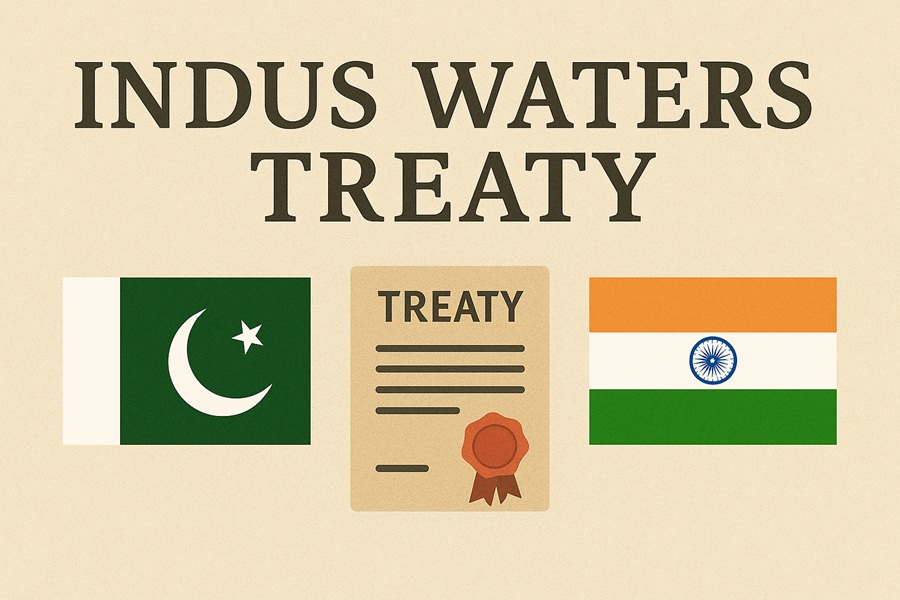Introduction
The Indus Waters Treaty (IWT) is one of the most enduring and significant water-sharing agreements in modern history. Signed in 1960 between India and Pakistan under the mediation of the World Bank, the treaty governs the use and distribution of the waters from the Indus River system. Despite numerous conflicts between the two nations, the treaty has largely withstood geopolitical tensions and continues to serve as a framework for transboundary water cooperation.
Historical Context
After the partition of British India in 1947, both India and Pakistan faced serious disputes over water allocation from the Indus basin. The rivers of the basin—Indus, Jhelum, Chenab, Ravi, Beas, and Sutlej—traverse both countries, making water sharing a critical issue. Early tensions culminated in a temporary Standstill Agreement, followed by the Inter-Dominion Agreement of 1948, which proved insufficient.
With mounting concerns, negotiations began with the assistance of the World Bank, leading to the formal signing of the Indus Waters Treaty on September 19, 1960 by Indian Prime Minister Jawaharlal Nehru and Pakistani President Ayub Khan.
Key Provisions of the Treaty
-
Division of Rivers:
-
Eastern Rivers (Ravi, Beas, Sutlej): Allocated to India.
-
Western Rivers (Indus, Jhelum, Chenab): Allocated to Pakistan, though India retains limited usage rights (e.g., for non-consumptive uses like hydroelectric power).
-
-
Transitional Period: India funded the construction of replacement canals and infrastructure in Pakistan during a transition period to facilitate independent water use.
-
Permanent Indus Commission (PIC):
A bilateral body comprising commissioners from both countries, responsible for implementing the treaty, sharing data, resolving technical disputes, and meeting regularly. -
Dispute Resolution Mechanism:
Includes:-
Bilateral negotiations
-
Neutral expert arbitration (via World Bank)
-
Court of Arbitration (if needed)
-
Significance of the Treaty
-
Longevity and Resilience: Despite wars (1965, 1971, Kargil 1999), and recurring tensions, the treaty has never been formally abrogated.
-
Water Security: It ensures water supply stability to Pakistan, a lower riparian country heavily dependent on agriculture.
-
Geopolitical Stability: The IWT has served as a rare model of cooperation between two adversarial states.
-
Precedent for Other Nations: The treaty is frequently cited in global discussions on transboundary water resource management.
Challenges and Criticisms
-
Changing Climatic Conditions:
Melting glaciers and erratic monsoon patterns affect river flow, challenging the assumptions of water availability on which the treaty was based. -
Population Growth and Demand:
Escalating water demand in both countries has strained water supplies, especially in drought years. -
Geopolitical Tensions:
Political instability and accusations of treaty violations (especially over Indian hydroelectric projects in Jammu and Kashmir) have periodically inflamed disputes. -
Call for Revisions:
Some in India view the treaty as overly generous to Pakistan; some in Pakistan view India’s upstream development as threatening. However, any revision is politically sensitive and diplomatically complex.
Conclusion
The Indus Waters Treaty remains a cornerstone of regional water diplomacy. As water scarcity becomes an increasingly urgent issue due to climate change and population growth, it is essential that both India and Pakistan maintain open dialogue and adapt the treaty’s implementation to emerging realities. Strengthening institutions like the Permanent Indus Commission and investing in joint research and data sharing are vital for the treaty’s continued success.
